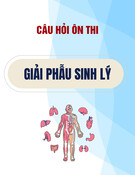
ISSN: 2615-9740
JOURNAL OF TECHNICAL EDUCATION SCIENCE
Ho Chi Minh City University of Technology and Education
Website: https://jte.edu.vn
Email: jte@hcmute.edu.vn
JTE, Volume 20, Issue 01, 02/2025
43
Analyzing the Sources of Noise in Internal Combustion Engines
Am Quoc Do
Ho Chi Minh City University of Technology and Education, Vietnam
Corresponding author. Email: amdq@hcmute.edu.vn
ARTICLE INFO
ABSTRACT
Received:
03/06/2024
Internal combustion engines are extensively used in various modes of
transportation, including ships and cars. However, their operation
generated significant noise, which can disrupt daily life and poses health
risks. Prolonged exposure to noise can lead to insomnia, cardiovascular
diseases, and even death, making noise pollution a growing social concern.
As the primary power source and major noise contributor in ships and
automobiles, internal combustion engines play a crucial role in overall
noise levels. The noise produced by internal combustion engines stems
from various sources and mechanisms within the engine. These includes
the combustion process itself, mechanical interactions between engine
components, and the exhaust system, ect. Each of these sources have
specific causes and contributing factors. This work discusses and analyzes
the sources of noise, their causes, and the factors that influence them. By
addressing these key areas, it is possible to reduce the negative effects of
engine noise on human health and well-being.
Revised:
21/06/2024
Accepted:
02/07/2024
Published:
28/02/2025
KEYWORDS
Engine noise;
Combustion noise;
Mechanical noise;
Knock;
Engine knock.
Doi: https://doi.org/10.54644/jte.2025.1608
Copyright © JTE. This is an open access article distributed under the terms and conditions of the Creative Commons Attribution-NonCommercial 4.0
International License which permits unrestricted use, distribution, and reproduction in any medium for non-commercial purpose, provided the original work is
properly cited.
1. Introduction
Noise is unwanted or harmful sound, and is considered noisy or unpleasant to the hearing. Noise
pollution is a growing issue, exacerbated by factors like population growth, urbanization, and higher
levels of transportation. It is closely associated with health problems like elevated blood pressure,
heightened stress, tinnitus, hearing impairment, sleep disturbances, and accelerated cognitive
deterioration. Some specific kinds of loud sounds, like those generated by heavy manufacturing
(exceeding 105 dB for an hour) or firearm noise (over 130 dB for a few seconds), can result in lasting
damage to one's hearing [1]-[2].
For a healthy young individual, the audible range spans from 20 Hz to 20 kHz. The sound pressure
level (SPL) at the border of this range fluctuates with frequency. Specifically, at 1 kHz, the SPL can
vary from 0 to 130 dB. The human ear is greatest feeling within the frequency range of 500 Hz to 5 kHz,
while it tends to be less responsive to sounds below 100 Hz (see Fig 1).
Figure 1. The audible range [3], [4].































